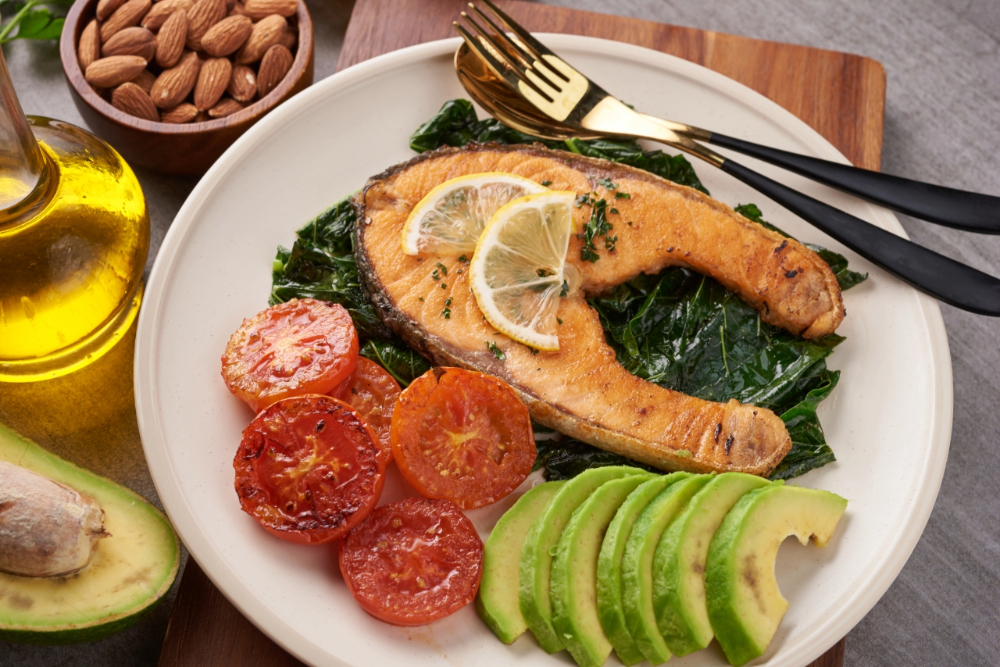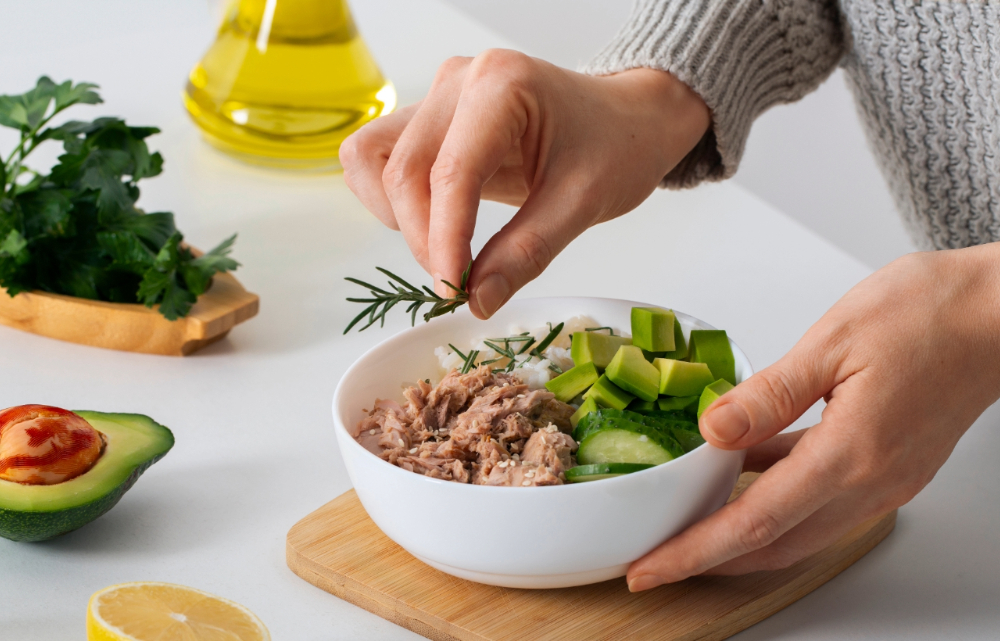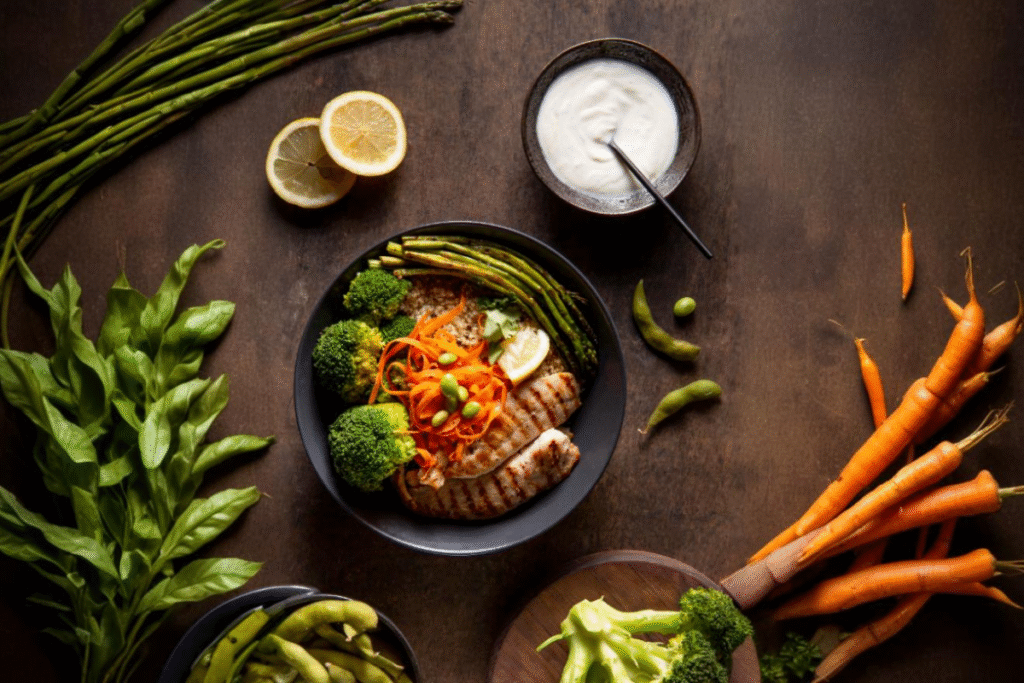Introduction
Whenever a layperson gets to hear, the term protein, what they probably see are body-builders, protein shakes, and the goal they have set in a gym. So, protein is not meant for gains; it has much more functionality as the backbone of health. By 2025, the interest will have shifted towards functional foods and whole foods, while protein-rich foods will be recognized beyond having made muscle gains-in terms of immune response, hormones, metabolism, and even mental clarity.
In this blog, we’re diving deep into how protein-packed functional foods go far beyond the basics—unlocking a world of healing, prevention, and longevity.
Common Functional Foods Rich in Protein
| Functional Food | Type of Protein | Health Benefit |
|---|---|---|
| Greek Yogurt | Casein & Whey | Gut health, muscle repair, immune support |
| Lentils | Plant-based protein | Heart health, satiety, digestive wellness |
| Eggs | Complete protein | Muscle growth, brain function, cell repair |
| Tofu | Soy protein | Hormonal balance, bone health, cholesterol control |
| Quinoa | Complete plant protein | Energy, satiety, amino acid balance |
| Chia Seeds | Plant-based protein | Omega-3s, satiety, anti-inflammatory effects |
| Salmon | Animal protein + omega-3 | Brain health, inflammation reduction, lean mass |
| Almonds | Plant-based protein | Heart health, blood sugar stability, energy |
Key Benefits of Protein from Functional Foods
| Benefit | Description |
|---|---|
| Muscle Repair & Growth | Supports tissue regeneration and lean mass gain |
| Immune System Support | Amino acids help produce antibodies and enzymes |
| Hormone Regulation | Proteins act as precursors to hormones like insulin, growth hormone |
| Appetite Control & Weight Loss | Increases satiety, reduces cravings |
| Metabolic Boost | Higher thermic effect of food (TEF), aiding calorie burn |
| Enhanced Nutrient Absorption | Some proteins help transport vitamins and minerals across cell membranes |
| Aging Support | Slows muscle wasting (sarcopenia) and maintains strength in older adults |
What Are Functional Foods, Exactly?

The term functional foods refers to the health benefits of food in addition to basic nutritional content.. That means they actively support wellness, reduce disease risk, or help with recovery. Think of them as nature’s multitaskers.
Now combine that with high-quality protein, and you’ve got a nutritional powerhouse.
Examples? Greek yogurt provides probiotics and protein in a cup. Salmon gives you lean protein plus omega-3s. These aren’t just meals—they’re tools for optimizing health.
Complete vs. Incomplete Proteins: Why It Matters
Let’s break it down.
- Complete Proteins have all nine essential amino acids your body can’t produce on its own. These come from:
- Eggs
- Fish
- Poultry
- Quinoa
- Soy
- One or more necessary amino acids are absent from incomplete proteins. However, they’re still valuable. Just mix and match—like rice + beans or hummus + whole grain pita—to complete the profile.
Functional eating isn’t about perfection—it’s about balance. Quality over quantity, and synergy over supplementation.
Protein for Immune Power and Inflammation

Here’s something not enough people talk about: protein boosts immunity. How?
- It fuels the production of antibodies.
- It promotes the growth of T-cells and B-cells, two types of immune cells.
- It repairs tissues damaged by inflammation.
Add in functional sources like turmeric-spiced lentils or garlic-grilled salmon, and you’re combining anti-inflammatory agents with protein. That’s smart food synergy.
In the post-pandemic world, people aren’t just eating for taste—they’re eating for resilience. And protein-rich functional foods are leading the charge.
Weight Management & Satiety: The Science
Trying to lose weight? Here’s why protein-rich functional foods are your best friend:
- High Satiety – You stay full longer, so you eat less.
- Lower Ghrelin – This “hunger hormone” drops when protein intake is high.
- More Thermic Burn – Your body works harder (and burns more calories) to digest protein compared to fats or carbs.
Functional choices like chia seed pudding, quinoa bowls, and almond protein bars not only fuel you—they regulate your appetite naturally.
No crash diets. No calorie-counting obsession. Just strategic nutrition.
Brain Gains: Protein and Mental Health

Protein-rich functional foods also support your brain chemistry. Certain amino acids (like tryptophan and tyrosine) are building blocks for neurotransmitters such as:
- Serotonin – Regulates mood, sleep, and appetite
- Dopamine – Enhances focus and motivation
- GABA – Calms the nervous system
Try mixing up a salmon and avocado bowl or snack on pumpkin seeds—they nourish your brain while stabilizing energy and mood.
Aging Gracefully: Protein’s Role in Longevity
The term “sarcopenia” refers to the age-related, normal reduction of muscular mass.. It starts around 30, accelerates after 50, and can increase your risk of falls, fractures, and fatigue.
Protein-rich functional foods help:
- Maintain muscle density
- Enhance mobility
- Reduce inflammation
- Boost bone health
Include easy staples like eggs, cottage cheese, miso soup, or lentil curry—not just for flavor but for sustainable strength.
Daily Strategy: How Much Protein Do You Really Need?
General rule:
- 0.8 grams of protein per kilogram of body weight (minimum)
- Athletes or active individuals may need up to 1.6–2.2 grams/kg
But quality trumps quantity. You’re better off getting protein from varied functional foods than overloading on powders or bars. Focus on meal balance rather than macro obsession.
Sample daily protein plan (for a 140-lb individual):
- Breakfast: Greek yogurt with chia seeds
- Lunch: Quinoa salad with chickpeas
- Snack: Handful of almonds or boiled eggs
- Dinner: Grilled salmon with steamed broccoli
You’ll hit your goals without even trying.
Conclusion: Eat Smart, Live Strong
The narrative around protein is evolving. No longer just a fitness buzzword, it’s now a foundation of functional eating. When you source your protein from nutrient-dense, health-enhancing foods, you’re not just building muscle—you’re building resilience, clarity, and longevity.
So the next time you think about protein, don’t just count grams—choose foods that heal, energize, and protect.
FAQs
A1. Functional foods are foods that offer health benefits beyond basic nutrition. When enriched with protein, they help improve muscle repair, metabolism, and overall wellness.
A2. Most adults need about 0.8 grams of protein per kilogram of body weight daily, but needs may increase based on activity level, age, or health goals.
A3. Top protein-rich functional foods include Greek yogurt, tofu, quinoa, eggs, lentils, chia seeds, and protein-enriched nut butters.
A4. Yes, plant-based proteins can be just as effective if you combine them to get a complete amino acid profile—for example, rice and beans or lentils and quinoa.
A5. Yes. Overconsumption may lead to kidney strain, digestive issues, or nutrient imbalances. It’s important to stick to recommended intake levels unless guided by a health professional.

